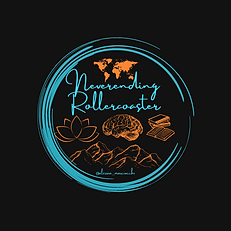The Way of Kami and Forest Bathing
- Alessia Masciocchi
- Jan 16
- 3 min read
Hello beauties!
Today we're moving to the land of the rising sun to understand how deeply the practice of Forest Bathing is rooted in this culture. It's no coincidence that it has reached the West, given its benefits. But today we'll focus more on tradition and spirituality..
Japan: a country where forests and woods cover almost 70% of the territory, it's no surprise that the indigenous spiritual tradition, Shinto (神道 /ʃiɴtoː/), is deeply rooted in nature.
The Way of Kami - Understanding Shinto
Shinto, in its most original sense, represents a deep relationship between the human and the supernatural. Ancient Japanese felt a profound connection with nature and could recognize the divine in every natural element, approaching it with wonder and reverence.
At the center of this belief system are the Kami (神 /kami/) - divine spirits that represent vital and cosmic forces. Similar to the concept of Mana (1) in other cultures, these forces manifest in sunlight, in the power of words, and in creation itself, sustaining life and conferring harmony and prosperity.
While some Kami were later anthropomorphized, most remained as formless spirits dwelling in trees, mountains, and natural forces, similar to Indian Devas (2).
English:
¹ Mana (māna, マナ) /maːna/
Origin: Melanesian
Translation: "supernatural force", "spiritual power", "life force"
² Deva (देव, デーヴァ) /deːvə/
Origin: Sanskrit (devá in Vedic Sanskrit)
Translation: "divine being", "deity", "celestial being"
Definition: A Sanskrit term that as an adjective indicates what is divine or celestial, while as a masculine noun indicates divinity or a god. It can rarely indicate an evil demon. The word is related to the Latin divus, variant of deus "god", from which derives the adjective divinus "divine" (belonging to the Indo-European language family).
Sacred Spaces and Symbols
The physical manifestations of Shinto beliefs are rich in symbolism.
The Shimenawa (注連縄 /ʃimenaɰa/) - sacred ropes made of hemp and rice straw, adorned with zigzag paper Shide (紙垂 /ʃide/) - mark sacred spaces and ward off misfortune.

The Torii gates (鳥居 /toɾiː/), whose name literally means "where birds perch," serve as portals between the mundane and sacred worlds.

Beyond these gates lies the Sando (参道 /sandoː/), a path often characterized by steps leading to the sacred enclosure.

A crucial element of every Shinto shrine is the Chinju no Mori (鎮守の森 /tʃiɴdʒɯ no moɾi/): a protective grove. These sacred woods typically feature ancient trees such as Sugi (杉 /sɯgi/, Japanese cedar), Kusu no Ki (楠 /kɯsɯ no ki/, camphor tree), or Hinoki (檜 /çinoki/, Japanese cypress).

Ritual and Purification
Before entering the actual shrine, visitors perform ablutions at the Chozuya (手水舎 /tʃozɯja/), a purification area. This ritual involves specific steps of washing hands and mouth, symbolizing the purification of body and spirit.

The shrine complex typically includes the Heiden (幣殿 /heideɴ/), the hall of offerings and prayer, and the Honden (本殿 /hoɴdeɴ/), which houses the Shintai (神体 /ʃiɴtai/) - the physical object representing the Kami's presence.
Shinrin-Yoku: The Art of Forest Bathing
The practice of Shinrin-Yoku (森林浴 /ʃiɴɾiɴjokɯ/) - forest bathing - emerged from this deep connection with nature. The word Yoku (浴 /jokɯ/) derives from Abiru (浴びる /abiɾɯ/), meaning to receive abundantly from above, suggesting a receptive attitude toward beneficial forces flowing from above.
The word Shinrin (森林 /ʃiɴɾiɴ/) itself tells a story through its components:
Shin (森 /ʃiɴ/) shows three trees in a triangle, representing the vertical movement of the forest toward the sky
Rin (林 /ɾiɴ/) shows two trees side by side, suggesting the horizontal relationship between trees and the nurturing aspect of human care for nature
This practice embodies the essential Japanese Shinto belief that nature must be respected and revered because we are part of it. Maintaining contact with nature is considered crucial for health and balance, bringing us closer to the Kami that reflect our true essence.
In today's hectic world, these ancient practices remind us of the importance of maintaining our connection with nature for spiritual growth and our overall well-being.
I hope this article has helped you understand how deeply nature is connected to Japanese tradition. It is important to trace the historical origins of various peoples' contact with nature; therefore, I will later publish an article about another population - from the past. Can you guess which one?

Comments